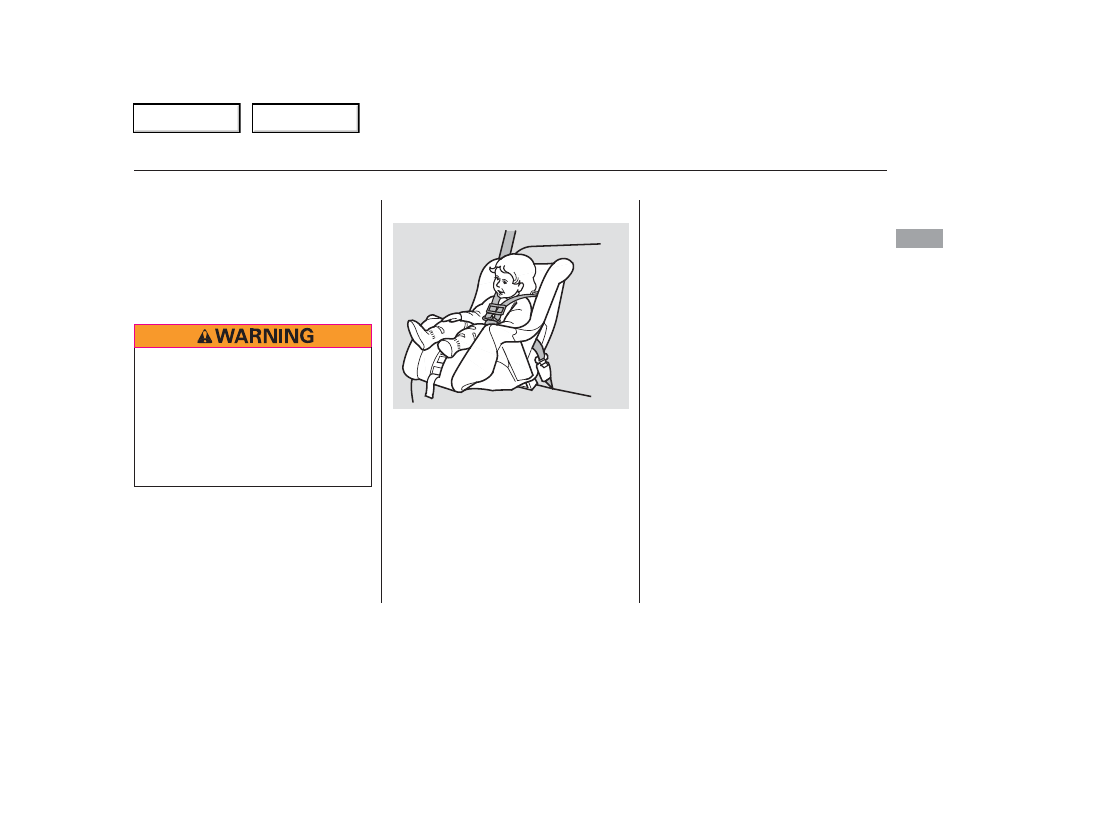Acura RSX (2006 year). Manual - part 3

A child who is at least 1 year old, and
who fits within the child seat maker’s
weight and height limits, should be
restrained in a forward-facing,
upright child seat.
Of the different seats available, we
recommend those that have a five-
point harness system as shown.
In either situations, we strongly
recommend that you install the child
seat directly behind the front
passenger seat, move the front seat
as far forward as needed, and leave it
unoccupied. Or you may wish to get
a smaller child seat.
If it is necessary to put a forward-
facing child seat in the front, move
the vehicle seat as far to the rear as
possible, and be sure the child seat is
firmly secured to the vehicle and the
child is properly strapped in the seat.
If the vehicle seat is too
far forward, or the child’s head is
thrown forward during a collision, an
inflating airbag can strike the child
with enough force to cause very
serious or fatal injuries.
We strongly recommend placing a
forward-facing child seat in a back
seat, not the front.
We also recommend that a small
child use the child seat until the child
reaches the weight or height limit
for the seat.
Protecting Small Children
Protecting Infants and Small Children
Child Seat Type
Placing a f orward-f acing child seat in
the f ront seat of a vehicle equipped
with a passenger’s airbag can be
hazardous.
Child Seat Placement
Dr
iv
er
and
P
asseng
er
Saf
e
ty
33
Placing a rear-facing child seat
in the front seat can result in
serious injury or death if the
passenger’s front airbag inflates.
Always place a rear-facing child
seat in the back seat, not the
front.
Main Menu
Table of Contents